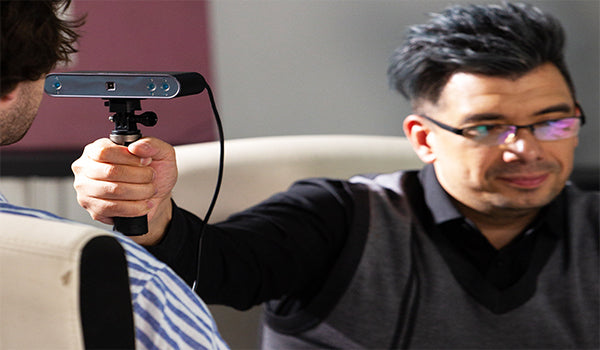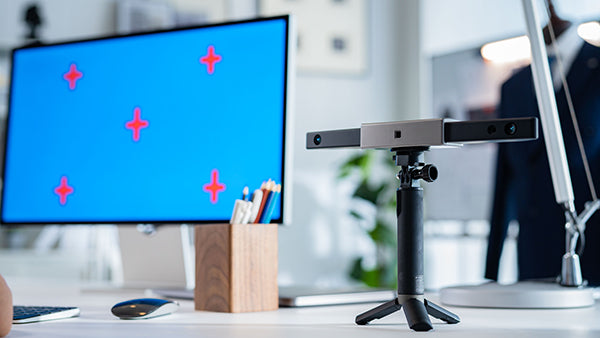Back in the 1980s, when 3D scanning was in its infancy, the tech used probes that physically touched objects to collect data points to build a 3D model. It was slow and severely limited by physical storage, as hard drives were in the KBs back then, so any thoughts of successful 3D body scanning were still the stuff of the future.
Fortunately, things have moved on quite a bit from the 80s, and now we’re in a whole new world of 3D scanning where objects and people can be captured in seconds rather than hours.
This enhanced ability to 3D scan entire bodies has been particularly welcomed by fashion, 3D printing, advertising, fitness, health care, and the entertainment industries. The demand to scan a whole body has seen the rise of full 3D body scanners.
These work in various ways; some use photogrammetry, and others use structured light, but one thing they tend to have in common is that they are pretty large and expensive. Let’s take a quick look at two of these products.
Full-body 3D Scanning Tech
Firstly, we have a Texel 3D body scanner; it’s around 2 meters high and uses structured light to fully scan a body in about 30 seconds, then outputs a finished 3D model in around a minute, which is pretty fast. Though at over $10,000, it’s a little expensive.
Secondly, we’ve got a Botscan NEO from a German company Botspot. It uses structured light and photogrammetry to make accurate 3D body scans and photorealistic textures. And it costs a staggering $200,000, but that’s the price you pay to capture a whole body in a hundredth of a second.
So as you’ve seen, getting full body scans is rather expensive and space-intensive, in essence leaving most people and small companies completely priced out from being able to acquire body scans easily.
An Alternative Solution
Ok, so you don’t have a spare 200 grand kicking around or ample space to install these large machines. Don’t worry; you can still get 3D body scans, though it’ll take a little longer. All you need is a Revopoint POP 2 3D scanner. It’s portable, accurate, and, most importantly it’s affordable, starting at only $699.
POP 2 is a structured infrared light scanner fully capable of getting full body scans when used in its handheld scanning mode. It uses a class 1 infrared light, so it’s completely eye-safe. And with a single-frame precision of up to 0.05mm, a point distance of up to 0.1mm, and up to 10fps scanning speed, the POP 2 is more than capable of accurately capturing a person from head to toe.
Check Out these 3D Body Scans Made with POP 2
On Revopoint’s forum, some users have shared their 3D body scans, and as you can see, they are excellent.
Pretty impressive for a 3D scanner that doesn’t cost 200 grand or fill a small room. Sure it’s slower than those previously mentioned scanners, as a full 3D body scan will take around 5 minutes and a bit of know-how to get it right, but the results speak for themselves. And whether you want a body scan to 3D print a mini human, fitness benchmarking, creating customized clothes or protective gear, speeding up game development, and many other applications, the POP 2 delivers the capability and more.
Don’t just take our word for it. See what one of our users had to say about it.
Mitchellkli Ngler says, “I was impressed with the quality of the product, the quality of the captures, and the speed. It seemed too much to be true, Using a PC or Android Phone to capture was all I needed, and the value of the product was very attractive……I’m satisfied with the results and I know the team is working to improve even more.”



Leave a comment
This site is protected by hCaptcha and the hCaptcha Privacy Policy and Terms of Service apply.